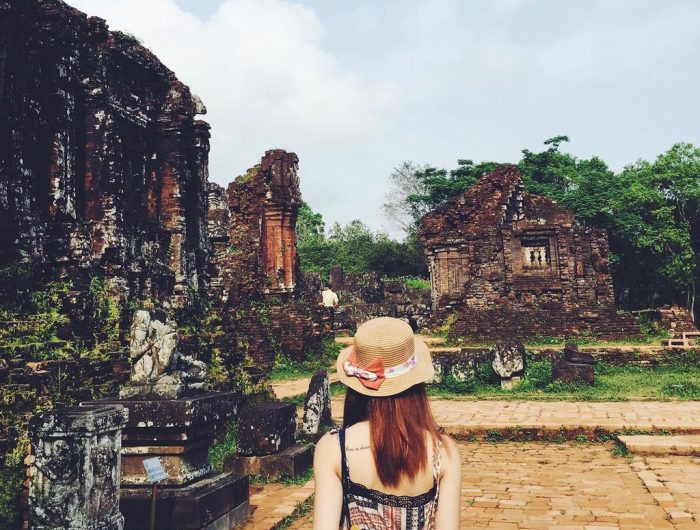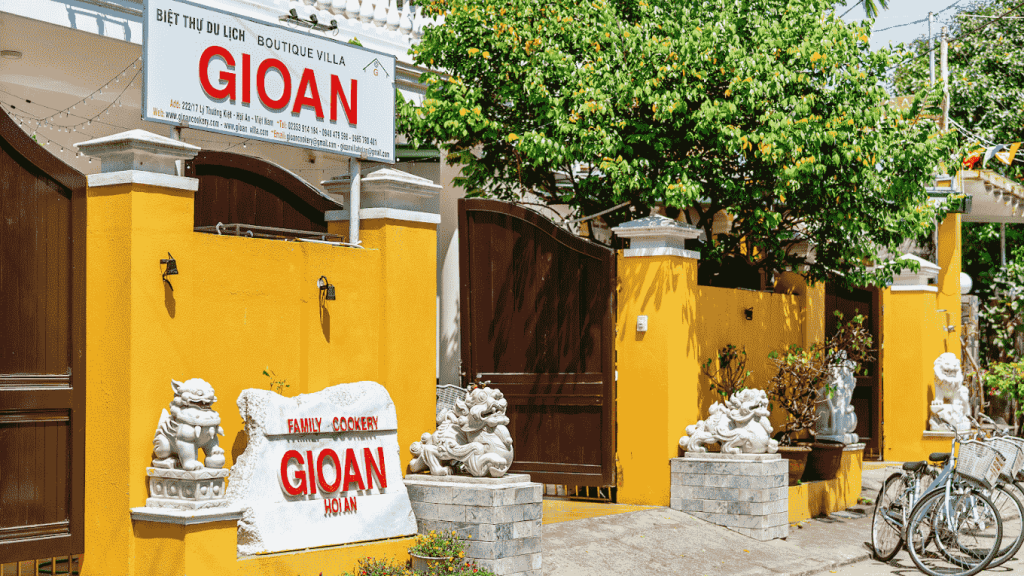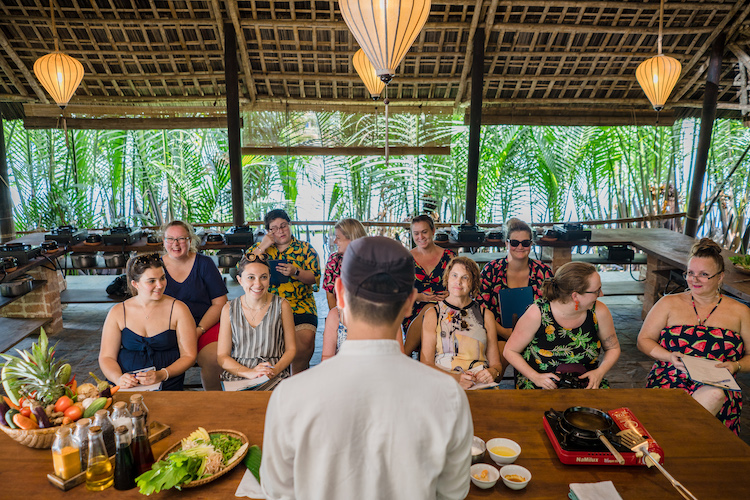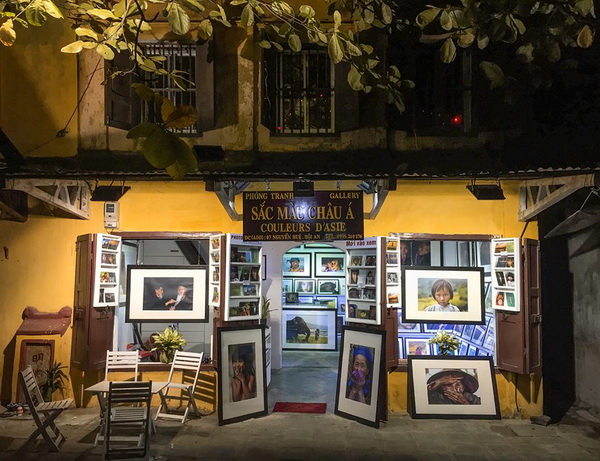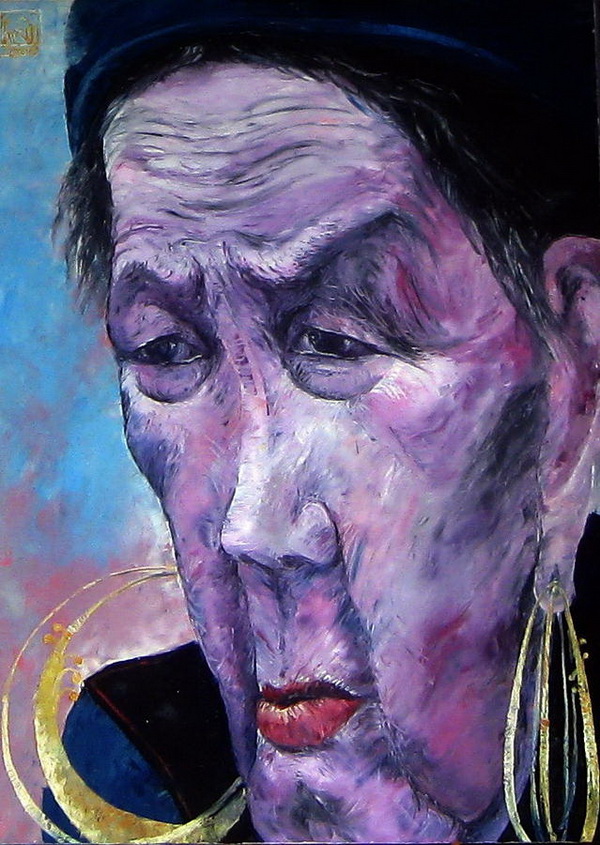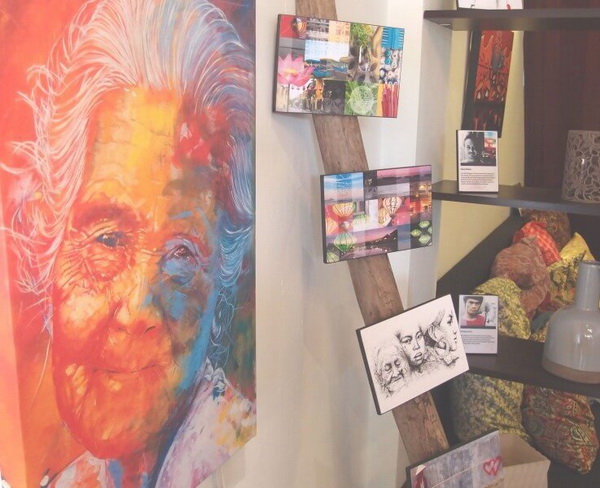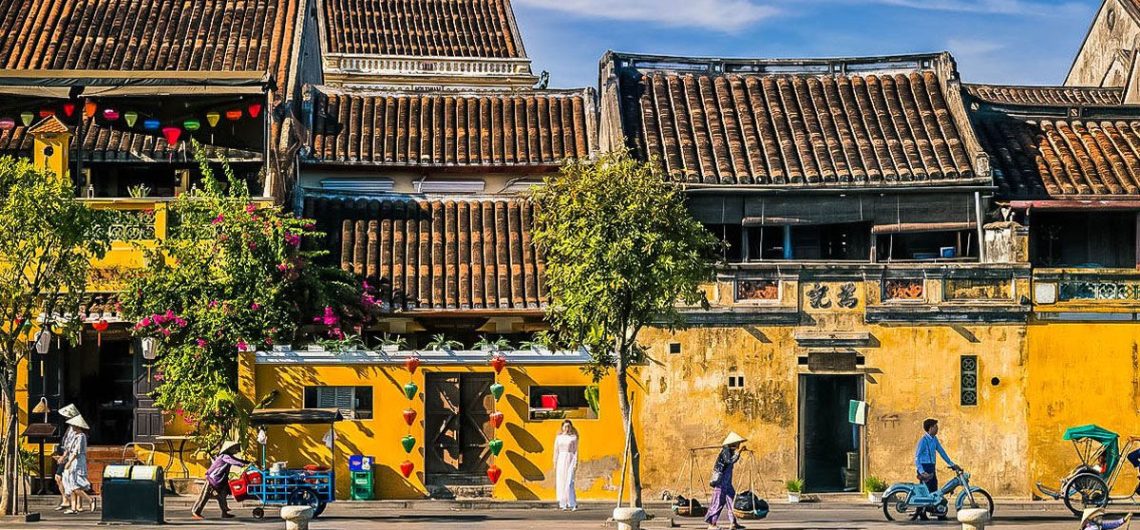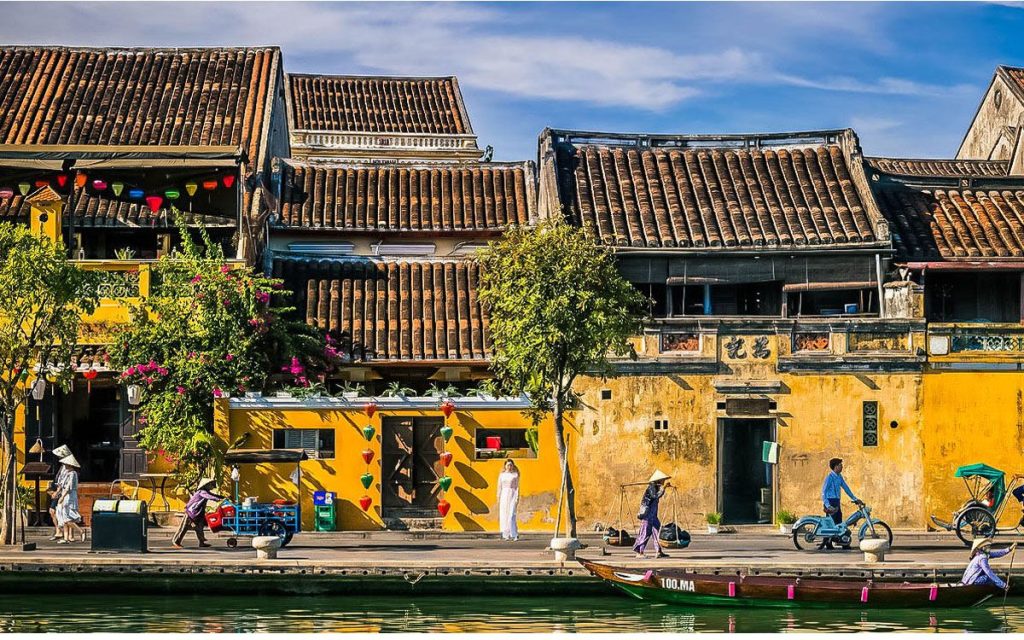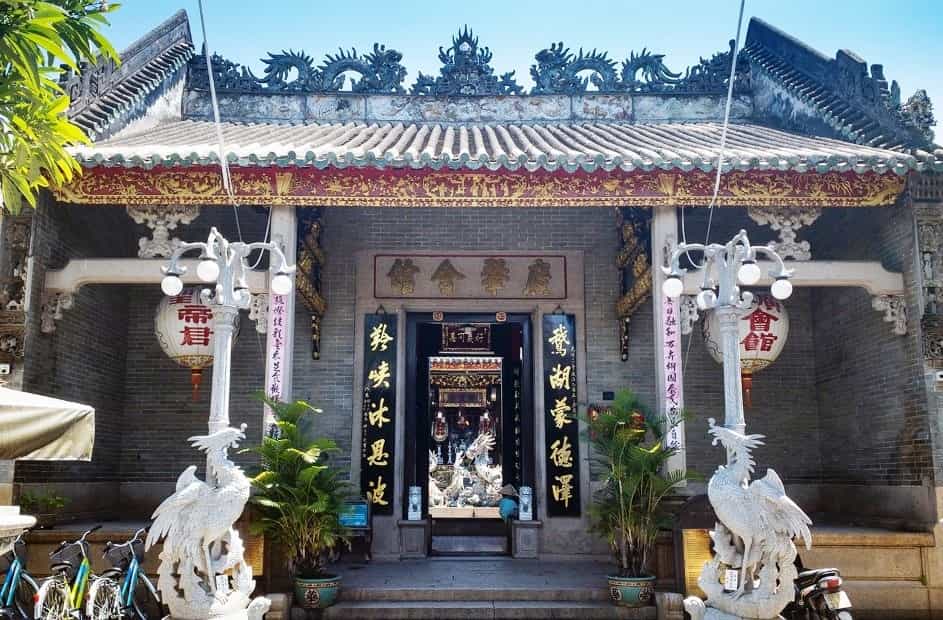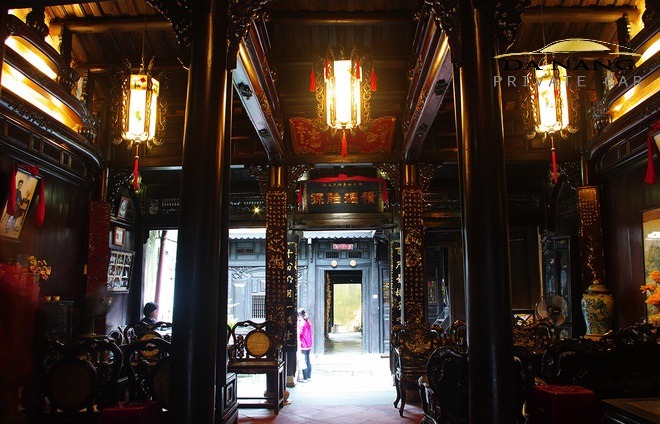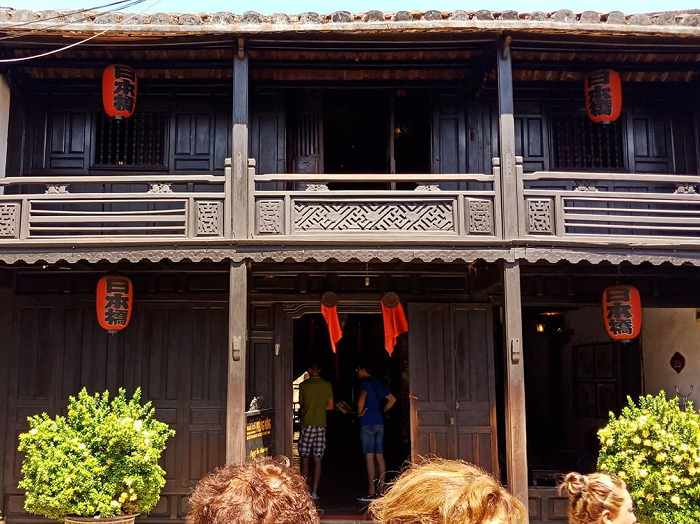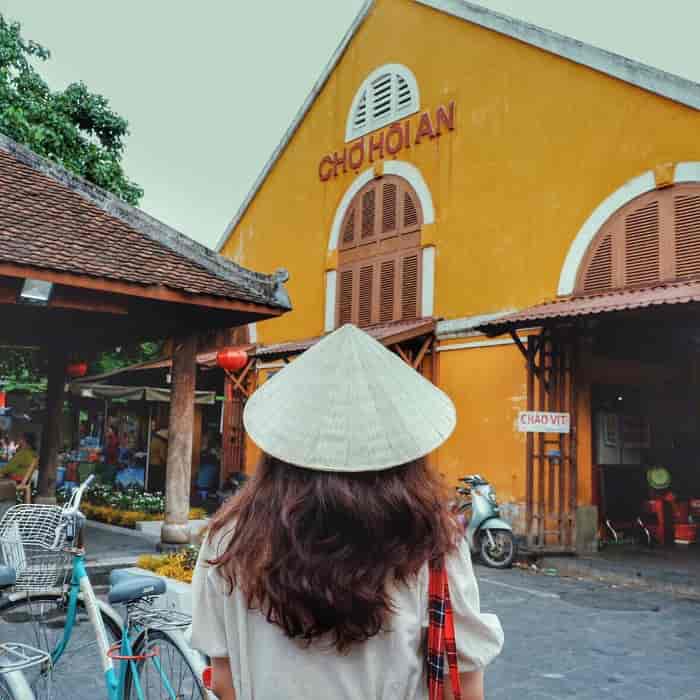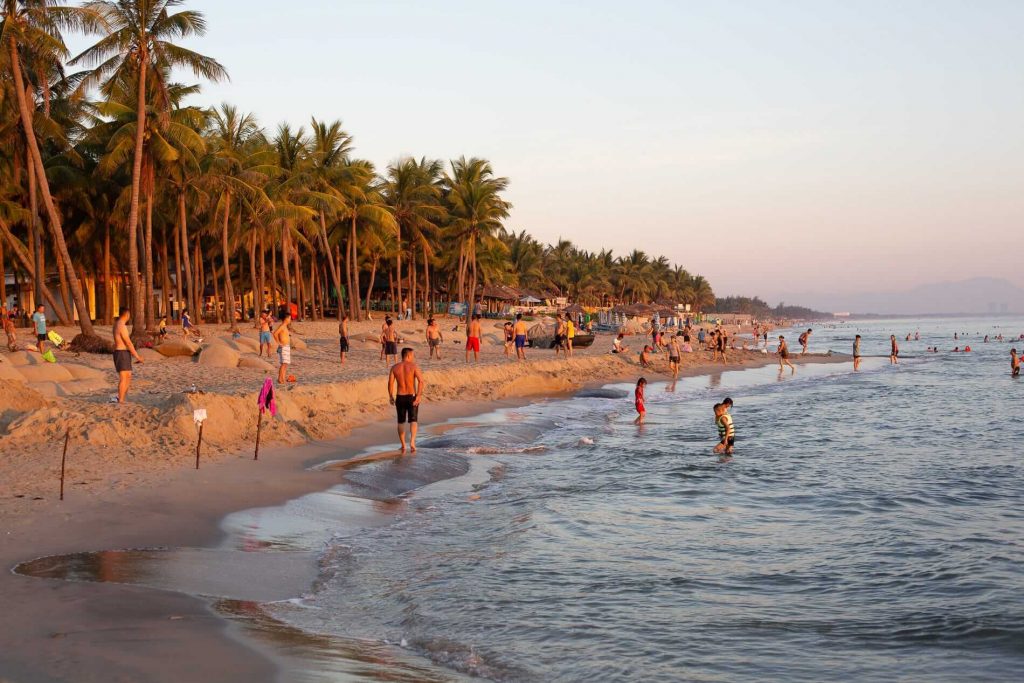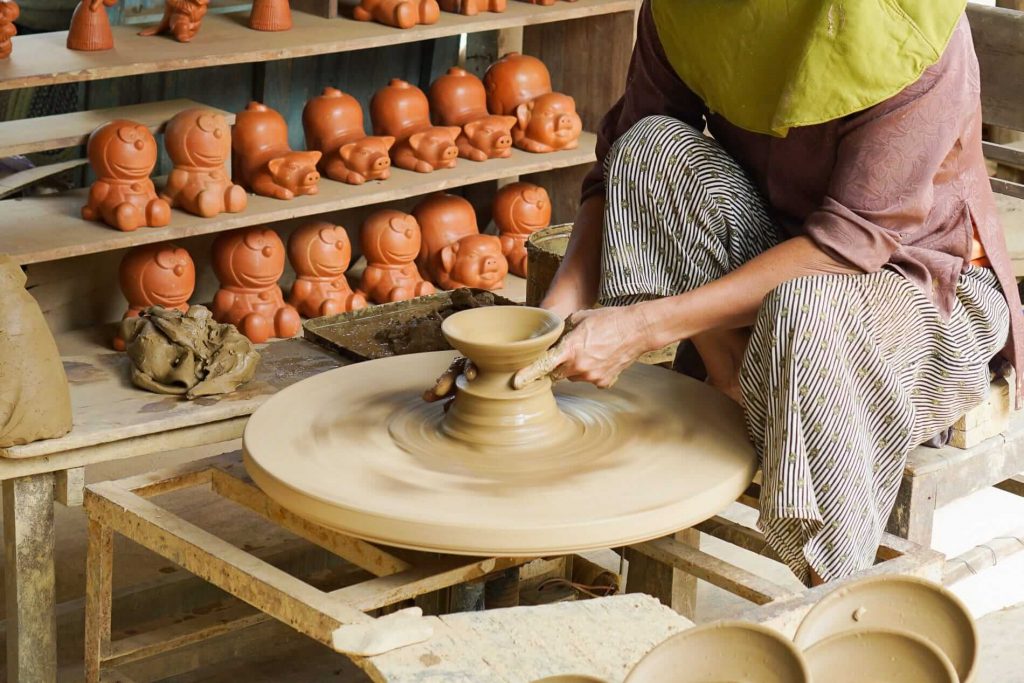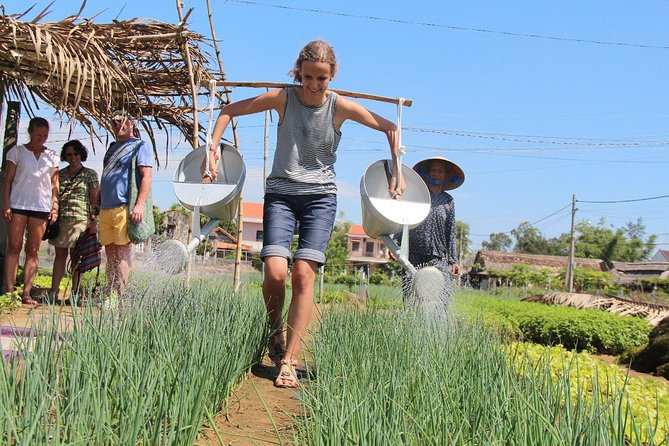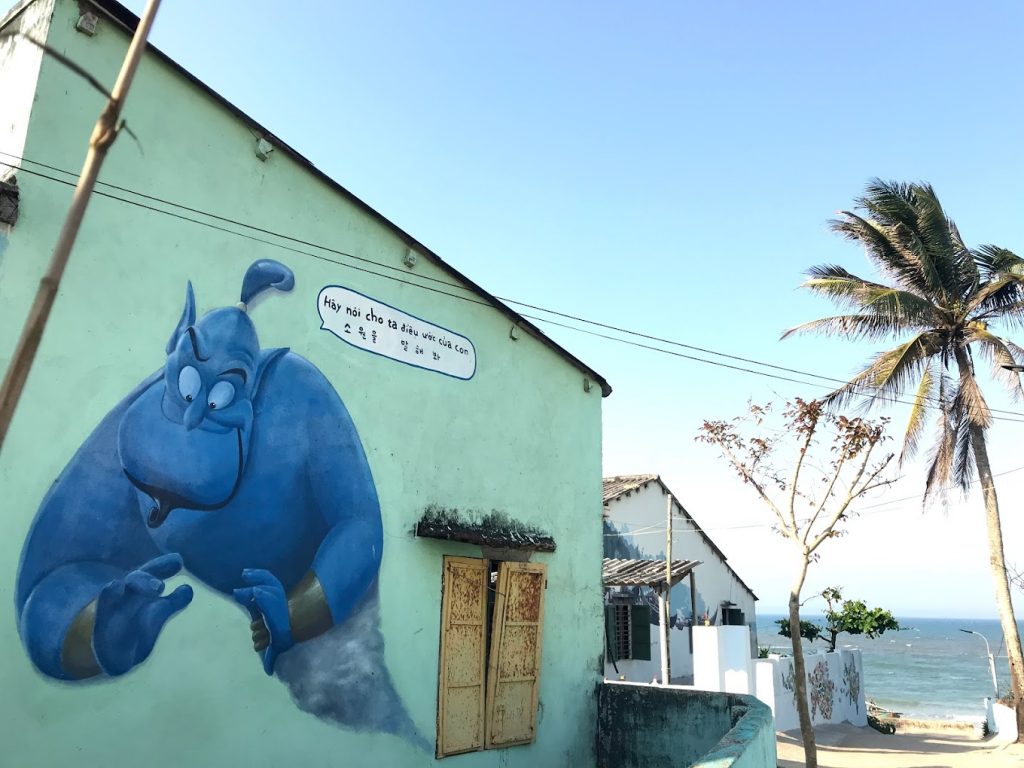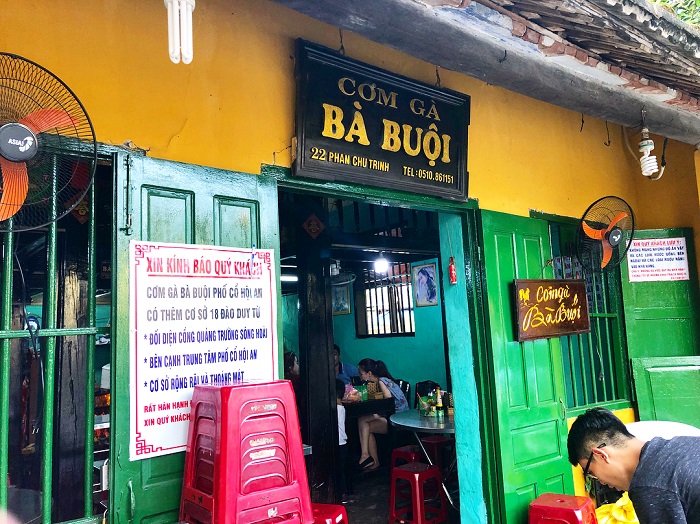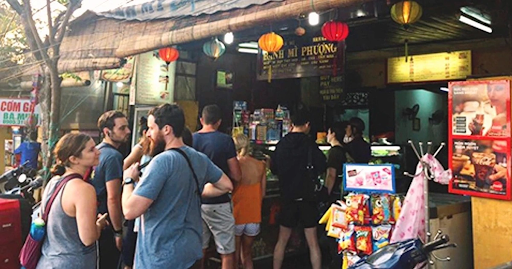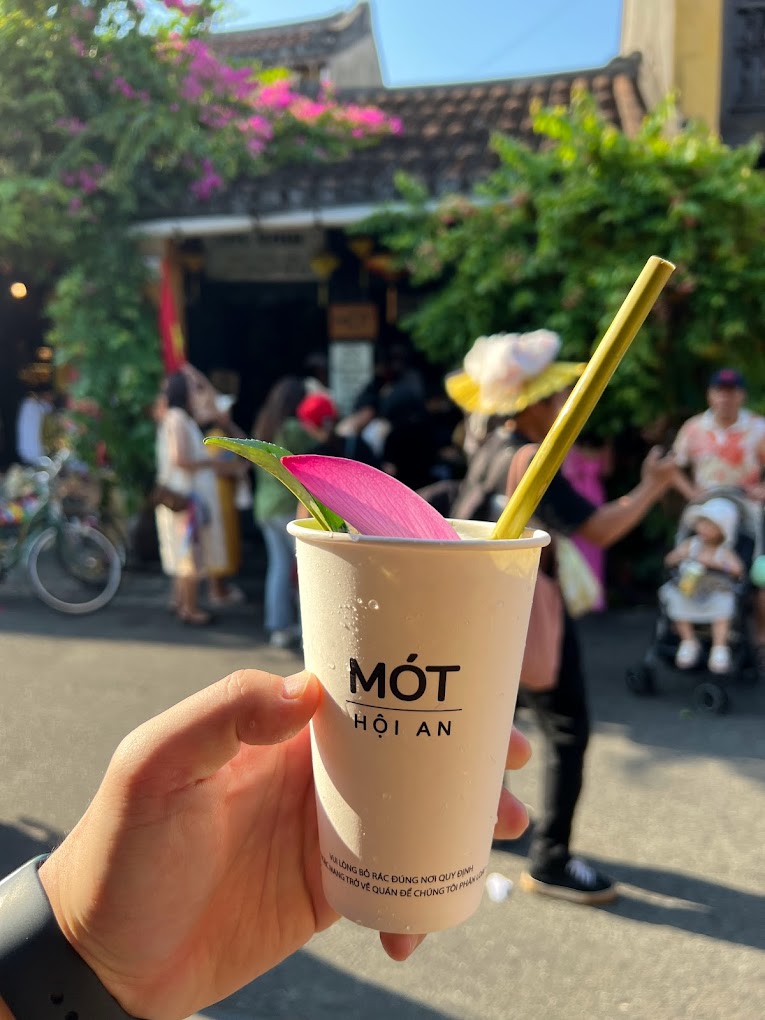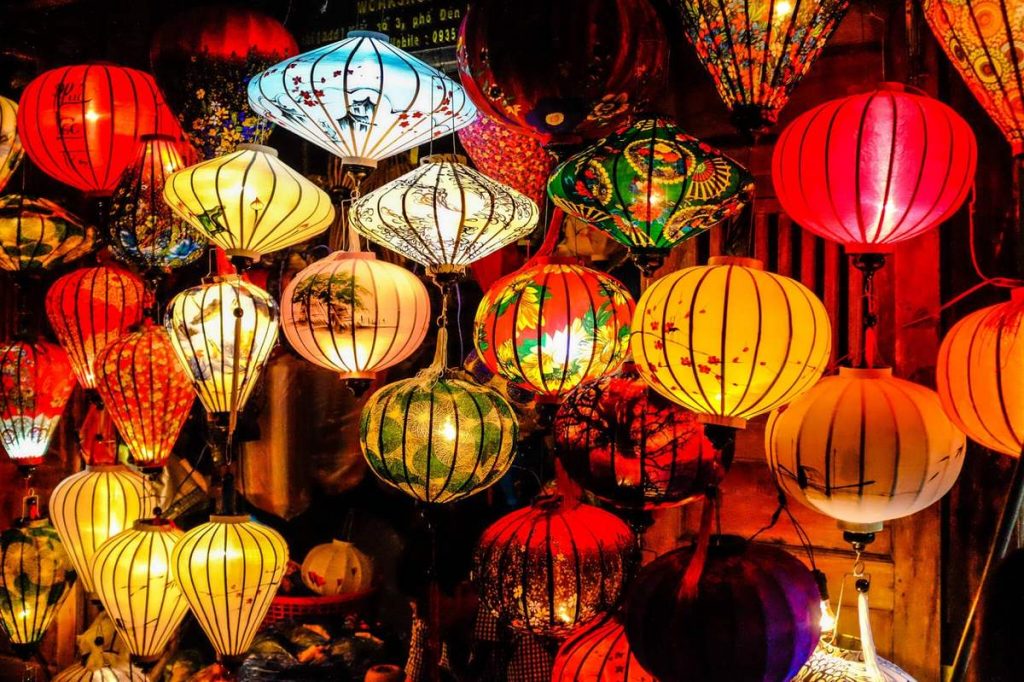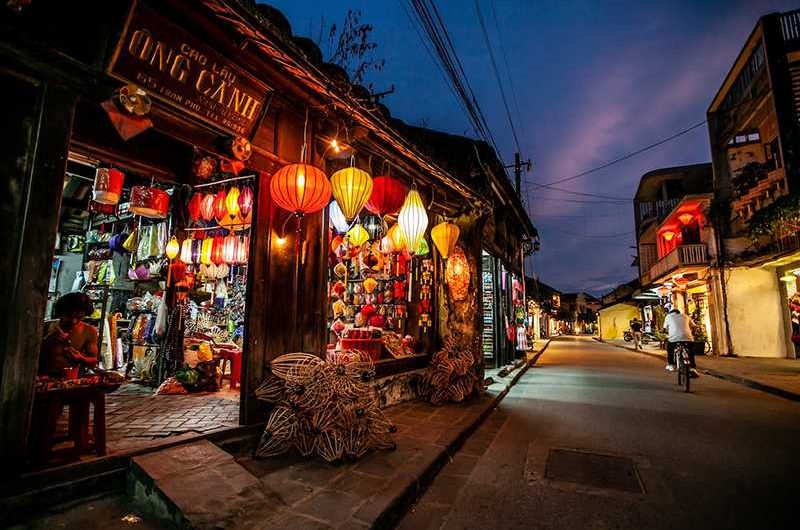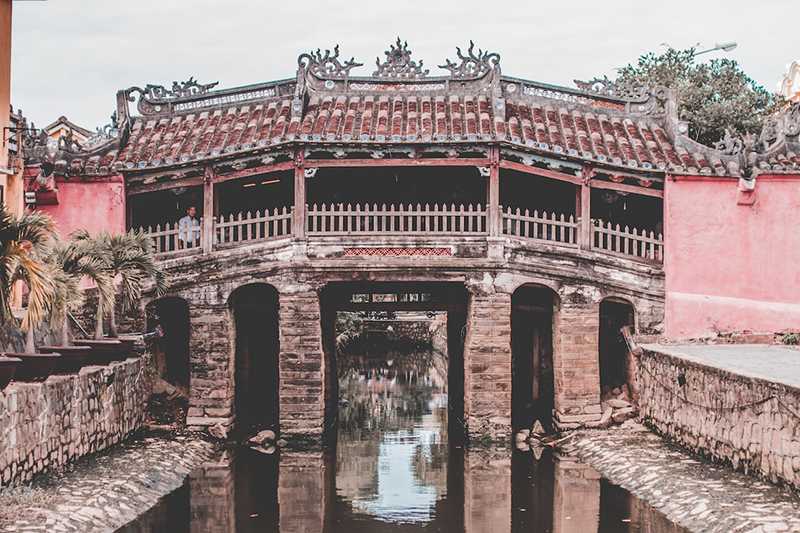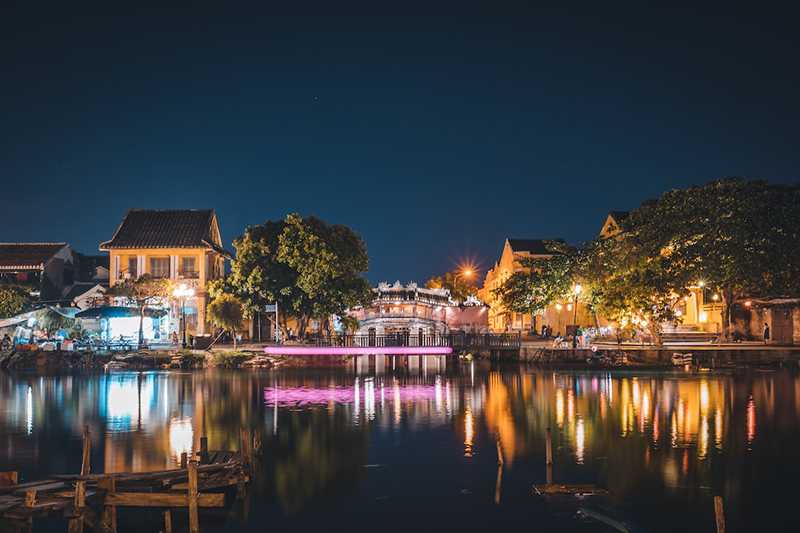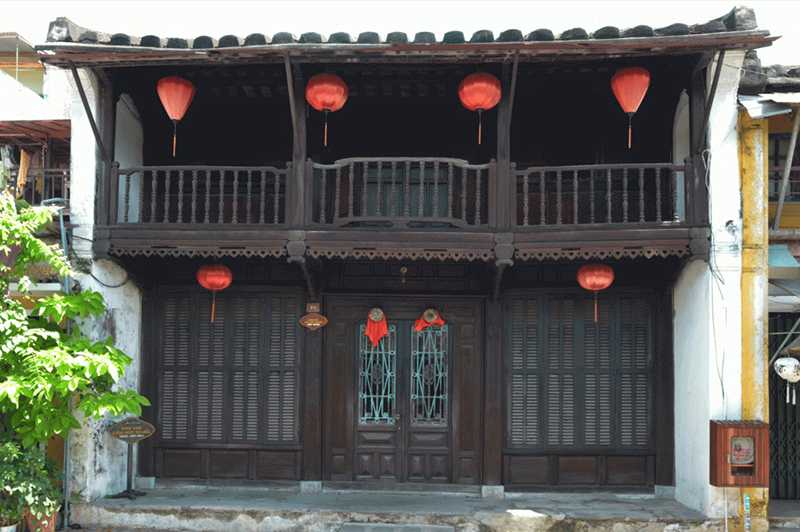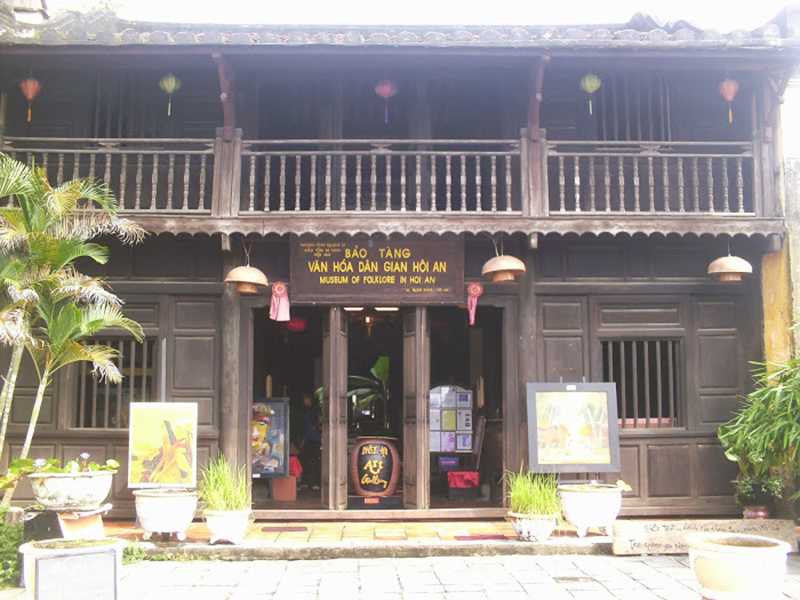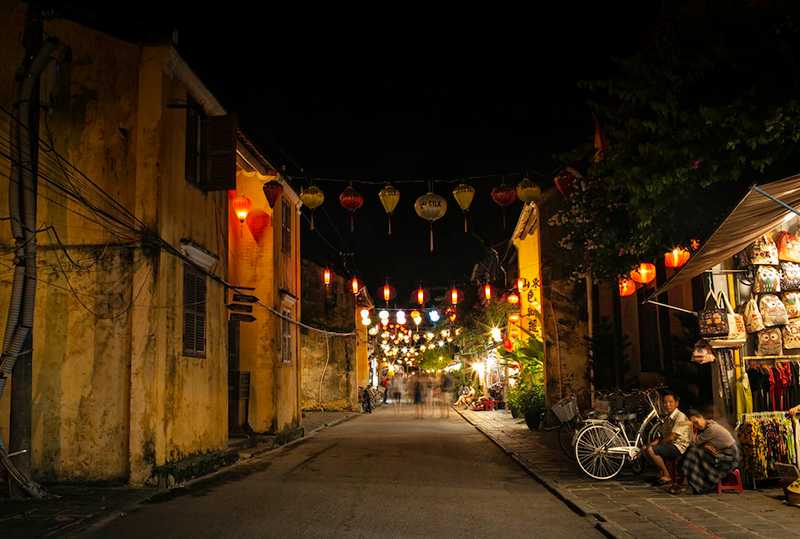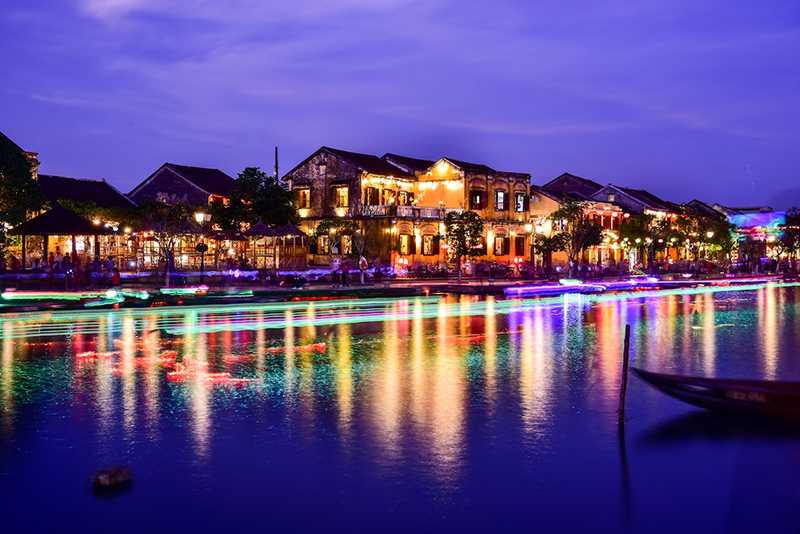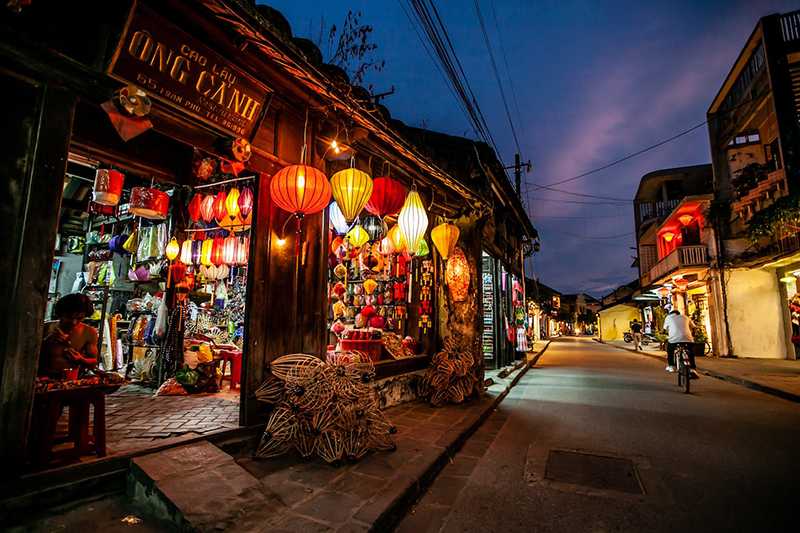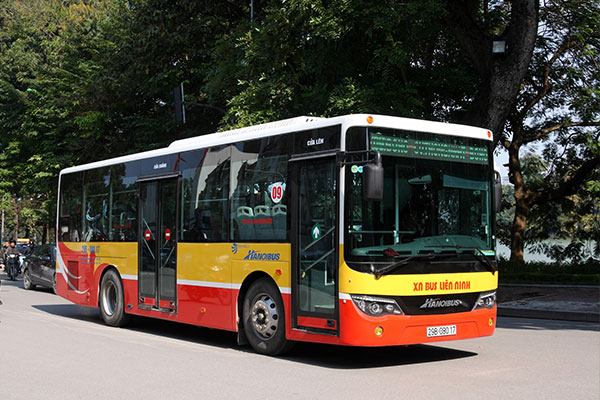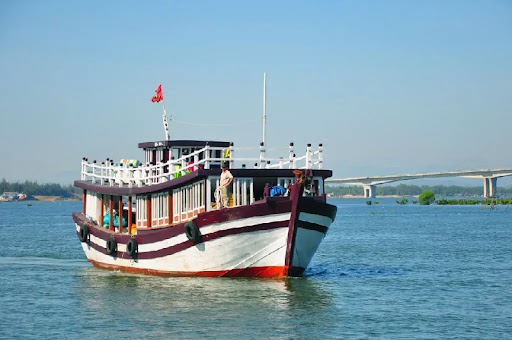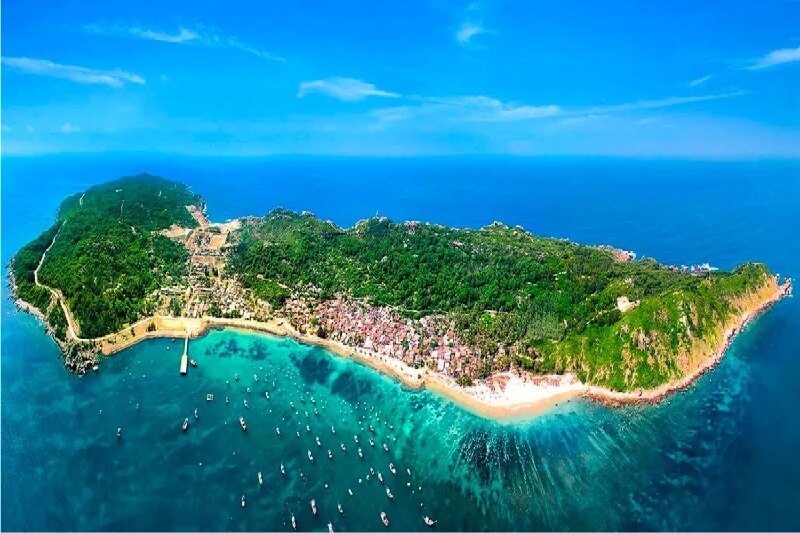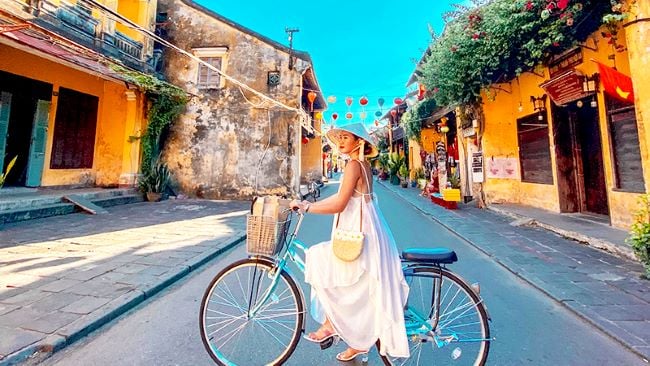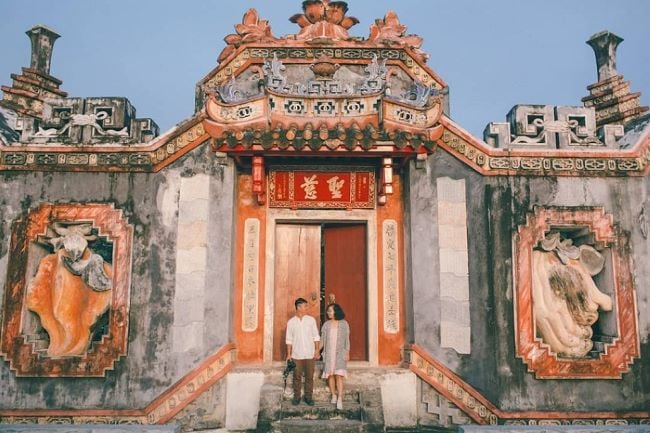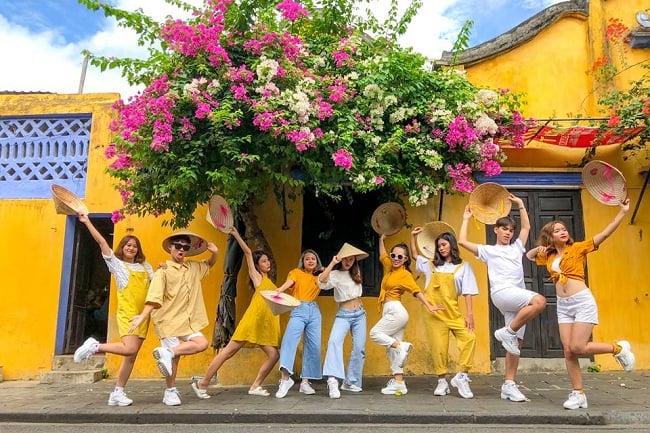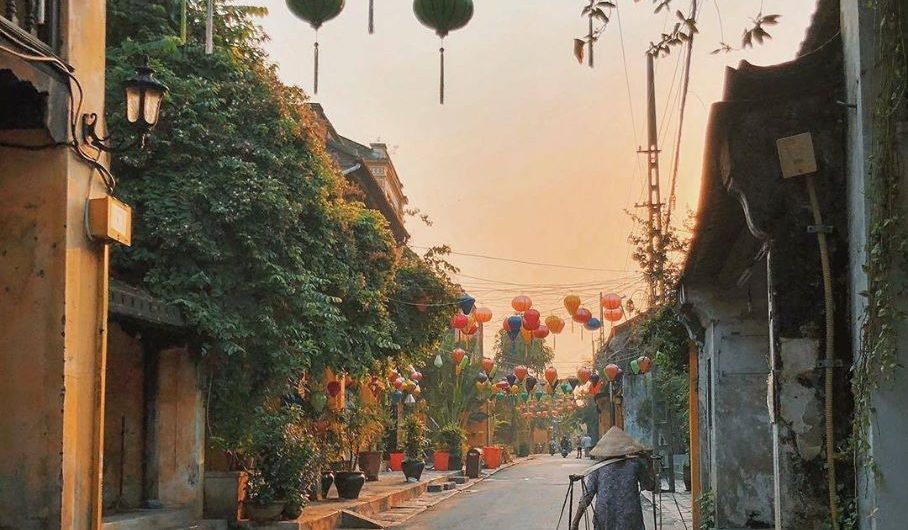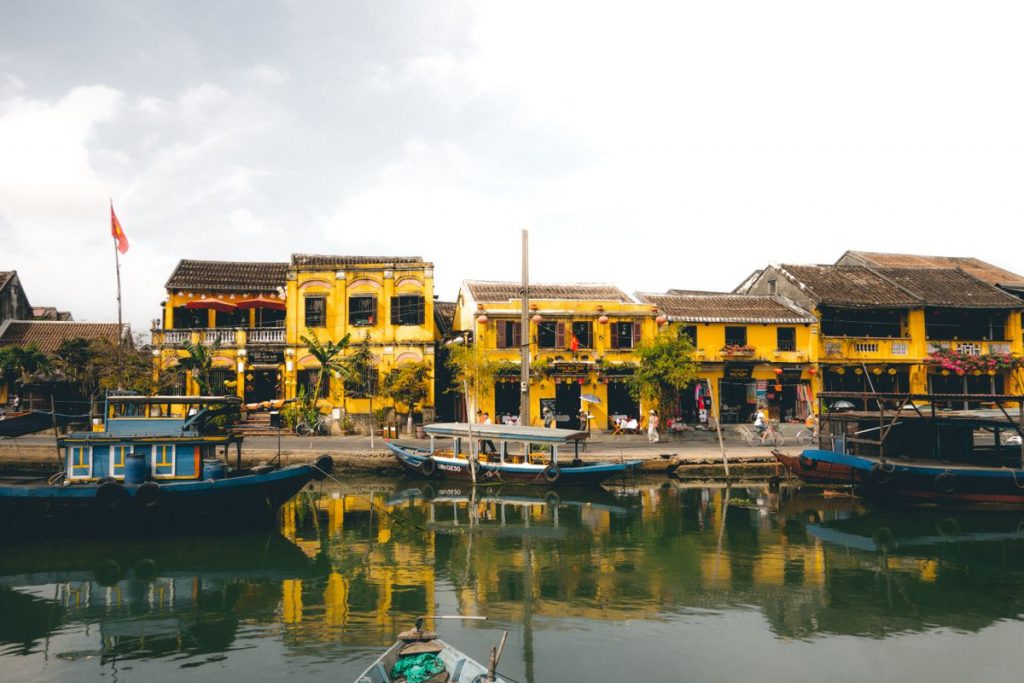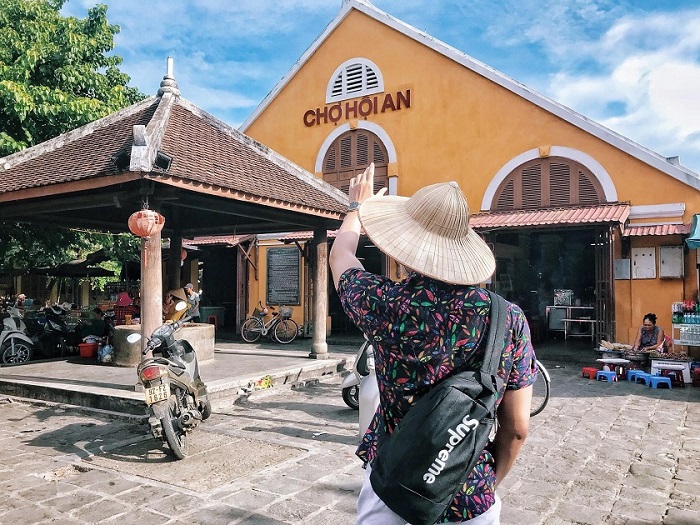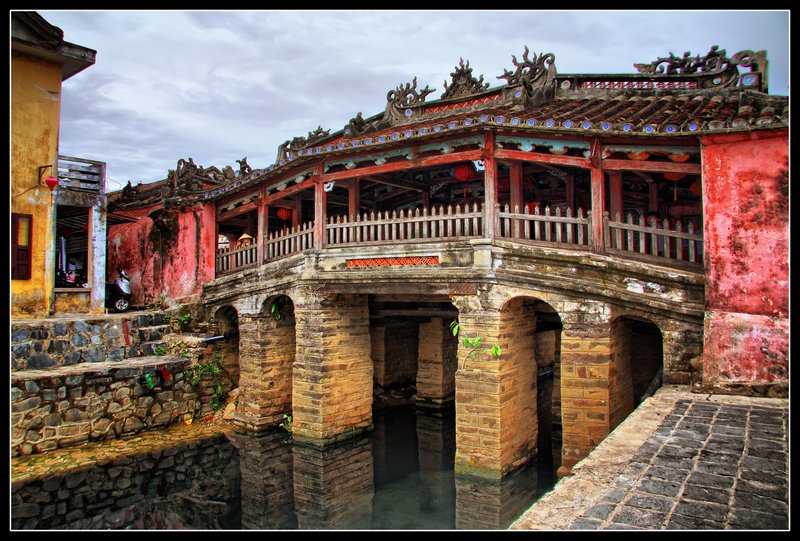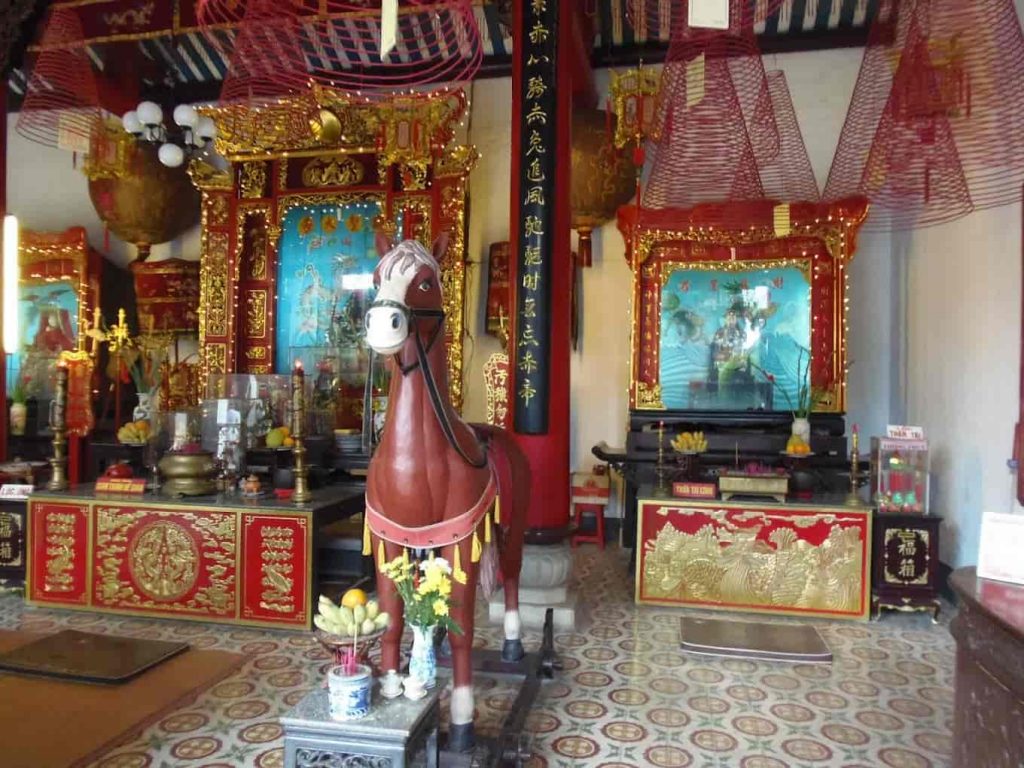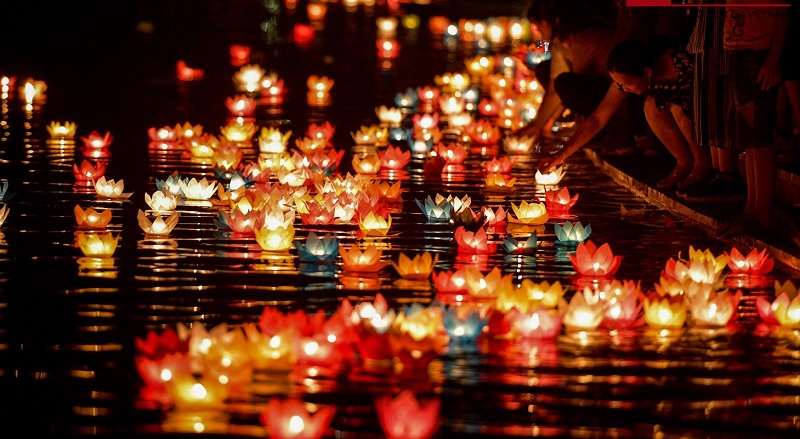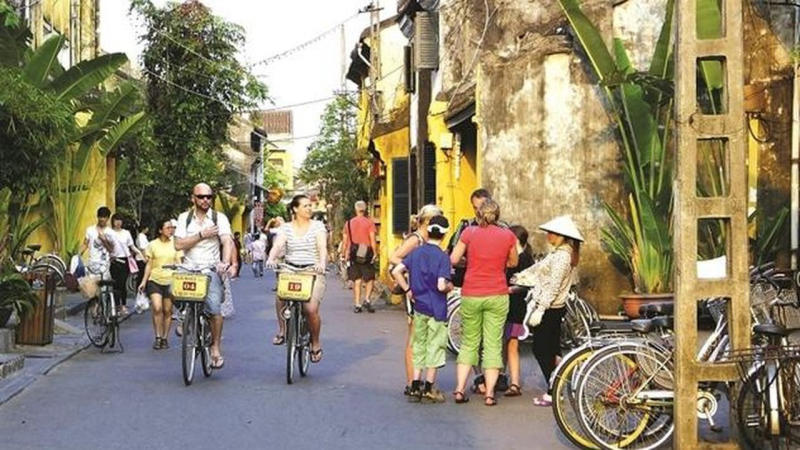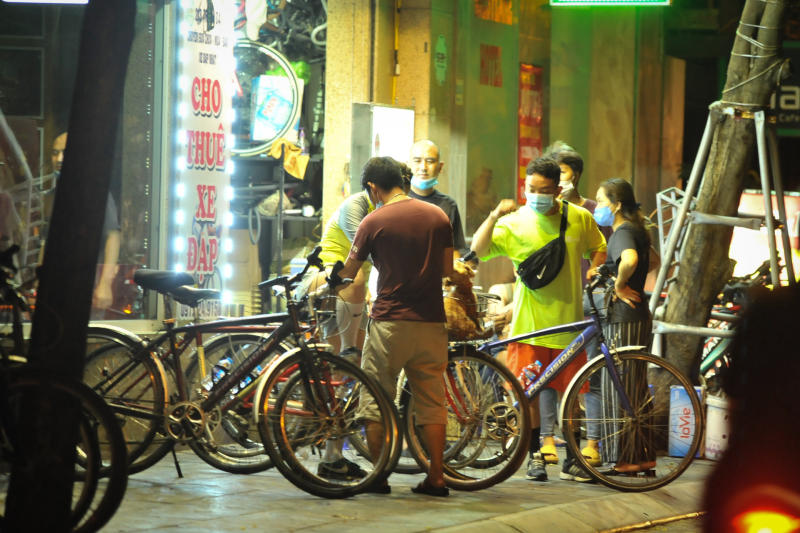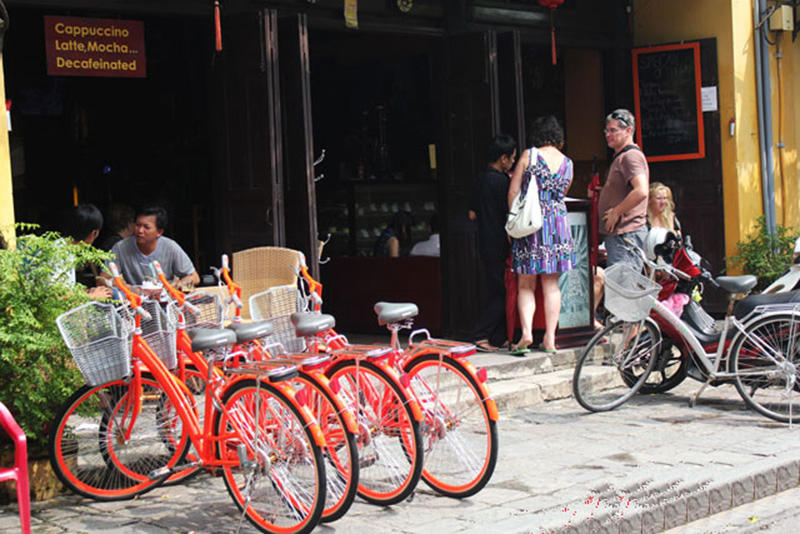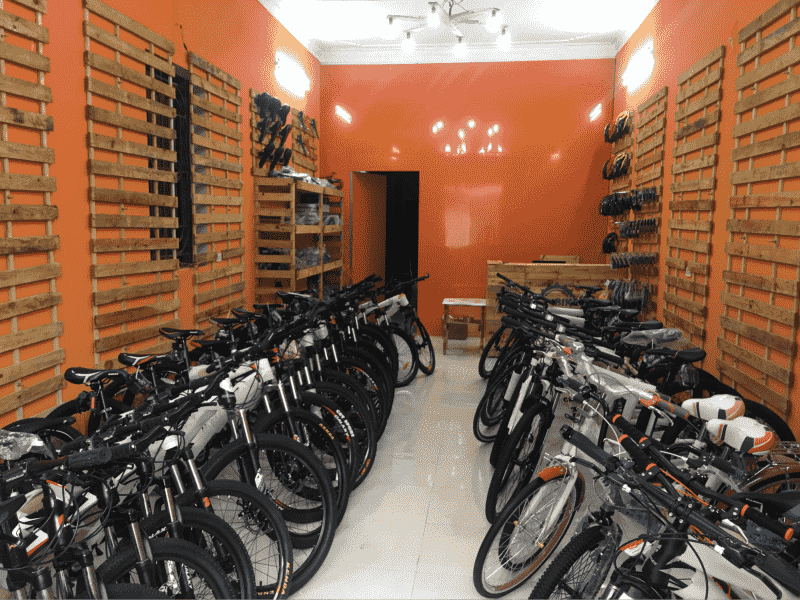My Son Sanctuary is a famous historical heritage of Quang Nam province with an architectural complex including many unique Champa temples. The relic site was discovered in 1885 and recognized by UNESCO as a World Cultural Heritage site in 1995.

My Son Sanctuary is hidden deep in the valley surrounded by mountains. In the past, this place used to be a place to worship as well as place the tombs of the ancient Champa kings.
Traveling to My Son Sanctuary: Essential Information
Where is My Son Sanctuary Located?
My Son Sanctuary is a complex of ancient Champa temple ruins situated in Duy Phú Commune, Duy Xuyen District, Quang Nam Province. It is about 20 km west of Tra Kieu Station, approximately 45 km from Hoi An, and about 68 km from Da Nang city center. The site is located in a valley with a diameter of 2 km and is surrounded by rolling hills, which adds to its mysterious allure, making visitors eager to explore and learn more.

History of My Son Sanctuary
My Son was established in the 4th century, initially to hold religious ceremonies for the kings of the Champa Kingdom. It also served as a burial site for Champa royalty and other national heroes. The temples here were built between the 4th and 14th centuries AD by King Bhadravarman.
At one time, the sanctuary had over 70 temples and many stone steles with inscriptions in Cham and Sanskrit detailing significant historical events. However, during the Vietnam War, extensive bombings by the U.S. led to the destruction of much of the architecture. My Son ceased to be an active site after this, and no new constructions were made.
It wasn’t until 1898 that a French scholar and his colleagues rediscovered and began studying the site. Despite the devastation from the war, many of the temples remain relatively intact and unique. In 1999, My Son Sanctuary was recognized as a World Heritage Site by UNESCO and has since become a popular tourist destination for both domestic and international visitors.
Opening Hours and Ticket Prices for My Son Sanctuary
Before visiting this World Heritage Site, visitors should check the opening hours and ticket prices to plan accordingly.
Opening Hours
According to travel experience for Hoi An and My Son Sanctuary, the site is open to visitors from 6:00 AM to 5:00 PM every day of the year, including holidays and Tet. This time frame allows visitors ample opportunity to explore and enjoy the site.
Ticket Prices
- Foreign visitors: 150,000 VND per person
- Domestic visitors: 100,000 VND per person
- Students: Discounted price available with a student ID card or national ID.
Note: Ticket prices include entrance fees and electric shuttle service to the main tourist area of the My Son Sanctuary.
What Transportation Options Are Available for Traveling to My Son Sanctuary?
Traveling by Bus
This option is highly suitable for students or budget-conscious travelers. To get to My Son Sanctuary, take bus route 06 from the Da Nang central bus station. The bus travels along Dien Bien Phu, Le Duan, Hoang Hoa Thâm, Nguyen Tri Phuong, Trung Nu Vuong, and Cach Mang Thang Tam streets, and Hoa Cam. Buses run every 30 minutes, and the fare ranges from 8,000 to 30,000 VND, depending on the route.
Traveling by Taxi
If you are unfamiliar with the roads or want to avoid the sun and wind, you can take a taxi from Da Nang to My Son Sanctuary. As a popular destination, it’s easy to find reasonably priced taxi services that will take you directly there, such as Mai Linh Taxi, Tiên Sa Taxi, Sông Hàn, and VinaSun. However, due to the considerable distance, the cost is quite high, averaging around 400,000 to 500,000 VND per trip.

Renting a Car
Tourists traveling in groups who do not want to take a taxi can rent a car for the day. This option provides flexibility in timing and allows you to visit additional destinations.
With DanangPrivateCar.com’s private car rental service with a driver in Hoi An, you can have a safe, comfortable, and private trip to My Son Sanctuary and other tourist spots in Hoi An. The service includes professional English-speaking drivers and door-to-door pickup to ensure the best experience. You can immediately book a private car service from Hoi An to My Son Sanctuary via WhatsApp: +84886660396
Traveling by Motorbike
For those who are adventurous, enjoy road trips, or prefer independence, traveling by motorbike is a great option. Motorbike rentals in Da Nang are quite affordable, ranging from 100,000 to 150,000 VND per day, depending on the type of bike. Along the way, you can enjoy the beautiful scenery, but remember to check your bike thoroughly and fill up with gas to ensure a safe trip.
Additionally, you can book a motorbike tour from Hoi An to My Son Sanctuary with DanangMotorbikeAdventure.com. Many international tourists choose this motorbike tour service, where the driver also serves as a guide, providing you with the most interesting trip.
Joining a Group Tour
This option is favored by many tourists, especially those with no experience traveling to My Son Sanctuary on their own. Group tours are quite affordable and suitable for everyone, including groups and families. Tours include round-trip transportation from Da Nang’s city center, and cover all expenses such as entrance fees and meals.
What Activities Make My Son Sanctuary a Must-Visit Destination?
Discover the Architecture of My Son Sanctuary
Despite thousands of years and the impacts of war and weather, My Son Sanctuary still preserves relics and remains that mark the cultural heritage of the Champa Kingdom from the 4th century. The site features more than 70 temples and towers in the Hindu architectural style, divided into four areas, each with a main tower and several smaller towers. All structures are built from brick and sandstone, and you will be amazed to see no traces of lime or cement between the pieces.

Here, you can admire the Kalan temple, also known as Shiva, the gate tower, the Mandapa tower, stone steles, statues of the god Siva, sacred animals, dancers, and many other temples. You’ll also gain a deeper understanding of the history of My Son and the unique culture of the ancient Cham people.
Visit the Museum at the Sanctuary
Many might not know that within this World Cultural Heritage site, there’s a museum located about 100 meters behind the ticket booth. It displays many ancient artifacts such as bas-reliefs, bricks, and lingas. After visiting, you’ll gain insights into the archaeology, history, and artistic sculptures and carvings in Cham beliefs. The Cham architecture reached its peak, meticulously decorated to vividly reflect their reverence for the sacred.
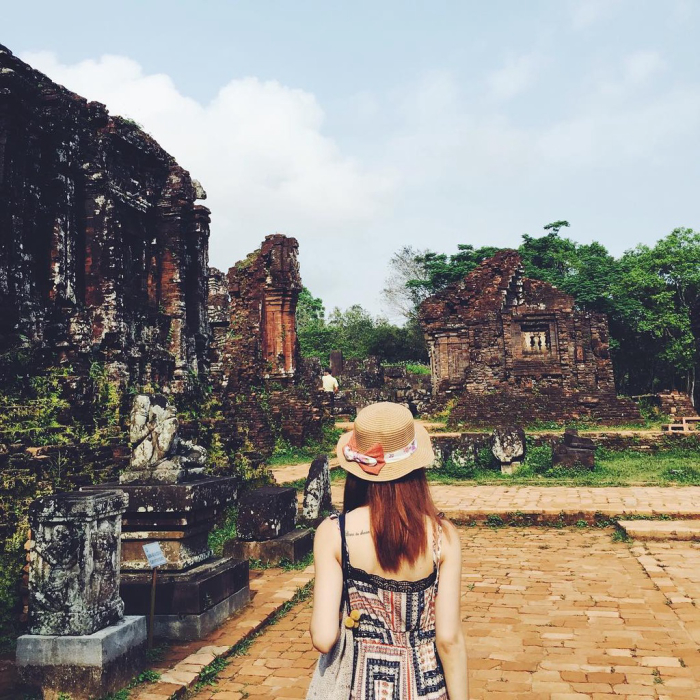
Enjoy the Enchanting Apsara Dance
What makes traveling to My Son Sanctuary special? Besides admiring ancient architectural works, visitors can enjoy the Apsara dance inspired by sandstone statues. This dance is extremely smooth and graceful, titled “the soul of stone,” celebrating the beauty of feminine curves.
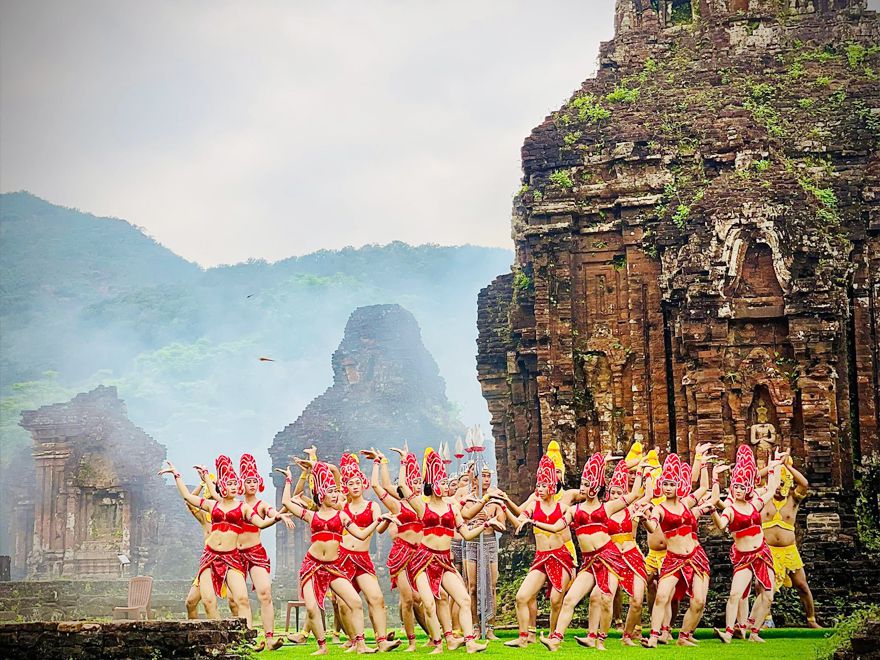
The Apsara dance is performed in provincial art programs and for tourist groups visiting the Sanctuary. The dance, accompanied by the lively sounds of the Paranung drum and the Saranai flute, will make you feel like you’re transported to the ancient Champa land, captivating you entirely.
Immerse in the Unique Katê Festival of the Cham People
If you visit during July (according to the Cham calendar), you have the chance to experience the vibrant atmosphere of the Katê festival. This is a highly significant festival for the Cham people, featuring rituals such as peace offerings, processions of ceremonial robes and Katê, and water processions. Additionally, there are numerous special art performances combined with traditional instruments that will keep you spellbound.
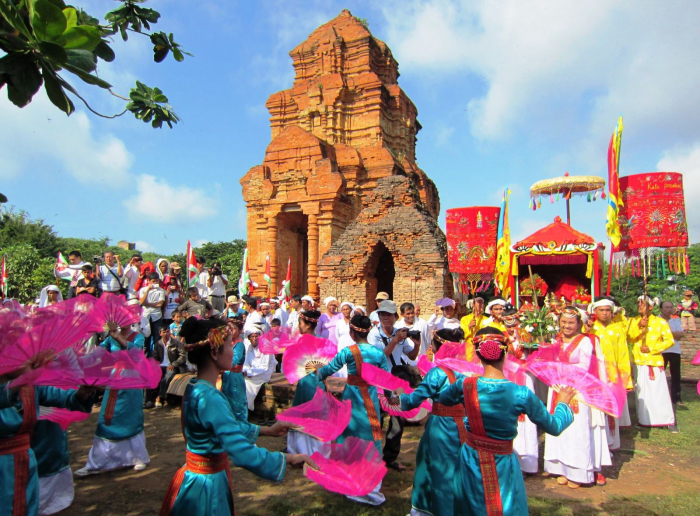
These insights into My Son Sanctuary compiled by DanangPrivateCar.com are meant to help you plan a visit to Da Nang and Hoi An. Don’t miss this site – it’s a perfect destination for history and architecture enthusiasts wanting to learn more about the ancient Champa Kingdom.
When Is the Best Time to Visit My Son Sanctuary?
The weather here is characteristic of Quang Nam’s climate with two distinct seasons: the rainy season and the dry season. The average temperature is around 25.6°C, and the average humidity is about 84%. Therefore, if you plan to visit this site, you should avoid the rainy season, which falls between October and December each year. During this time, the weather is unstable, and the roads are slippery and difficult to navigate.
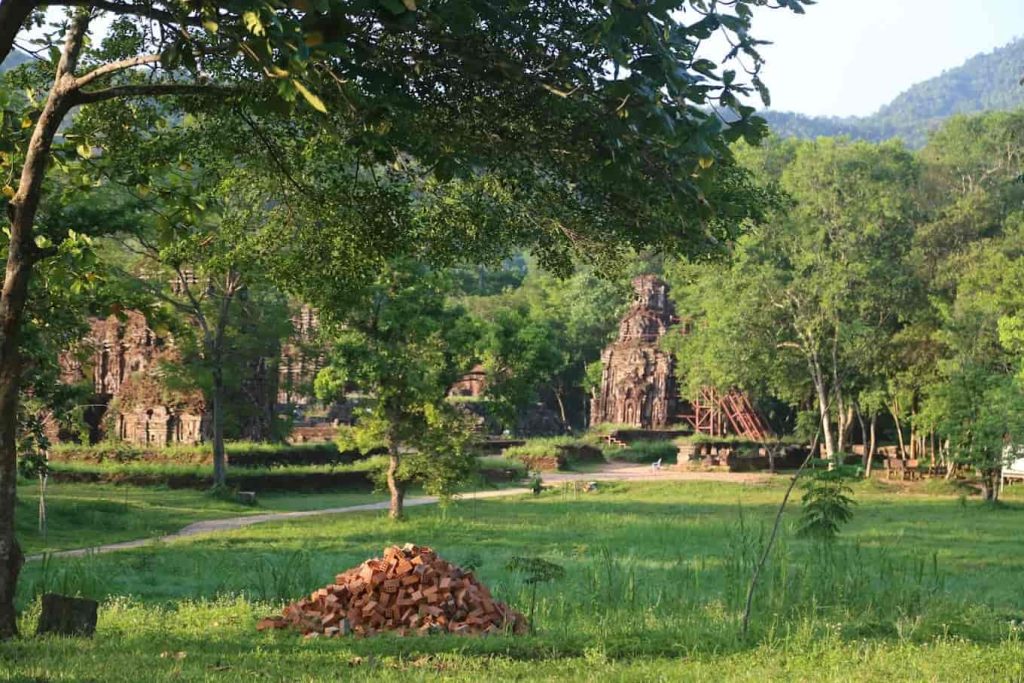
The most convenient time to visit is from January to September. This period is the dry season in Quang Nam, so the weather is quite favorable with little rain and dry conditions, allowing you to travel comfortably and enjoy sightseeing and photography.
What to Prepare When Traveling to My Son Sanctuary in Quang Nam?
What to Wear When Visiting the Sanctuary?
Most visitors come during the dry season, which is characterized by hot and sunny weather. Therefore, you should prioritize comfortable, breathable clothing. You can wear dresses, skirts, maxi dresses, or jeans and t-shirts, but remember not to wear anything too revealing, as this is a renowned heritage site.
In addition to your outfit, don’t forget to bring a jacket and a hat. Since visiting this site involves a lot of walking, it’s advisable to wear comfortable footwear such as sneakers or sandals to make walking easier and more pleasant.
Essential Items to Prepare
Even though it’s just a day trip and you won’t be staying overnight, you should still prepare the following: an umbrella, sunscreen, motion sickness medicine (if traveling by car or taxi), some snacks like sweets, fruit, and water in case you get hungry. Make sure to have your identification documents with you, and bring a good camera or smartphone to capture memorable moments.
What to Eat When Traveling to My Son Sanctuary?
The Cau Mong smoked calf
The Cau Mong smoked calf is one of the must-try delicacies when visiting My Son Sanctuary. The beef is selected from calves that are grass-fed and weigh around 30 kg. The meat is roasted over charcoal to maintain its color, sweetness, and crispiness of the skin. It is then sliced thinly and served with dipping sauce and fresh vegetables. The dipping sauce is made from roasted sesame, garlic, lime, and is very delicious.
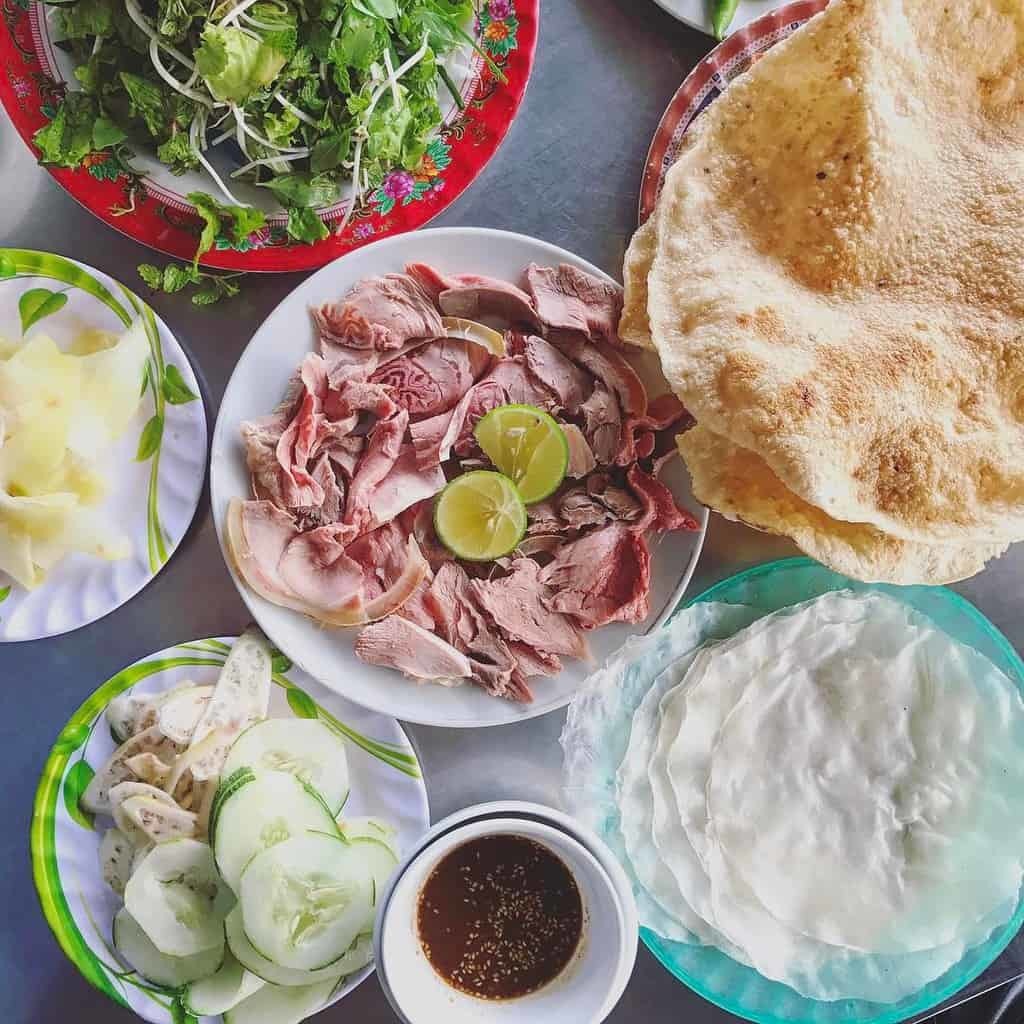
My Quang Phu Chiem
This is a specialty of Quang Nam – Da Nang that leaves a lasting impression on anyone who tries it. My Quang Phu Chiem is made from chewy rice noodles combined with pork belly and shrimp, served in a rich broth, creating an irresistible flavor. It is enjoyed with fresh vegetables, roasted peanuts, crispy rice crackers, and a touch of spicy chili.

Banh Xeo
Banh Xeo is a famous dish from Central Vietnam, particularly from the Quang region. When visiting this area, don’t forget to try this delicious savory pancake. Made from rice flour mixed with turmeric powder and water, it is spread thin to achieve a crispy texture. The filling includes shrimp, pork, and bean sprouts, creating a sweet and savory flavor that is not overwhelming. It is served with fresh herbs and dipped in fish sauce.

In addition to these dishes, visitors can also try other local specialties such as Cao Lầu, Com Ga, Bánh Đập, Bánh Bèo, and Bánh Tổ.
Should You Stay Overnight When Visiting My Son Sanctuary, and Where to Stay?
Due to its operating hours from 6 AM to 5 PM, most visitors choose to go back on the same day to make the most of their time exploring other attractions in Da Nang and Hoi An. However, if you prefer to stay overnight, you’ll need to choose from hotels nearby, as the sanctuary itself does not offer accommodation. Here are a few suggestions:
- Le Dung Hotel: 32 Tran Phu Street, Tam Ky, Quang Nam
- Le Domaine de Tam Hai: Tam Hai Commune, Tam Ky, Quang Nam
- Muong Thanh Hotel: 351 Xuan An Ward, Tam Ky, Quang Nam
For more accommodation options, you might consider staying in Hoi An or Da Nang. Based on travel experience, it is recommended to return to Da Nang. As a popular tourist city, Da Nang offers a wide range of hotels and guesthouses in various qualities and price ranges, allowing you to enjoy the city and explore the ancient town of Hoi An.
Some Other Tips to Know When Traveling to My Son Sanctuary
- At the entrance to the tourist area, discounted tickets are available for students. You should bring your student ID or ID card and household registration to enjoy the discount. Additionally, if you do not fall into this category, you can visit during holidays, Tet, or special occasions when the My Son management often offers promotional programs.
- My Son Sanctuary is isolated from the outside, surrounded by dense vegetation, and lacks restaurants or souvenir shops like other tourist spots. Currently, only one entity is allowed to operate here, where you can shop or purchase items in the city.
- You can freely explore and take photos, but incense burning and offering rituals are not permitted. According to travel experiences, although My Son is a famous temple complex with some spiritual significance, it restricts actions such as incense burning or offering rituals.
- Start your tour from the main temple area, as getting around can be a bit challenging. To gain a better understanding of this site, it is recommended to hire a guide. Most of them are locals who can provide valuable information about this place.
- As mentioned, one of the features here is the cultural performances, which only occur at four specific times each day. If you want to enjoy them, arrange your schedule accordingly to avoid missing out.
These are some travel tips for My Son Sanctuary compiled by DanangPrivateCar.com. If you are planning a trip to Da Nang or Hoi An, do not forget to visit this site – a perfect destination for those who love history and architecture and want to learn more about the culture of the ancient Champa Kingdom.

